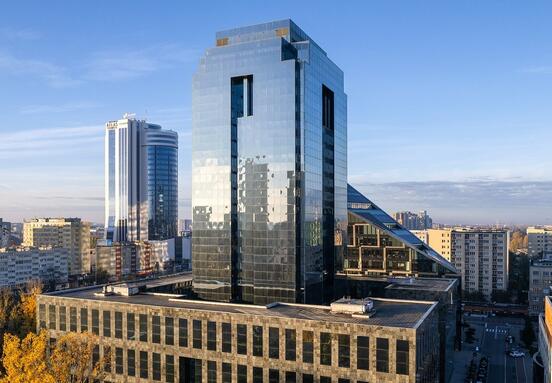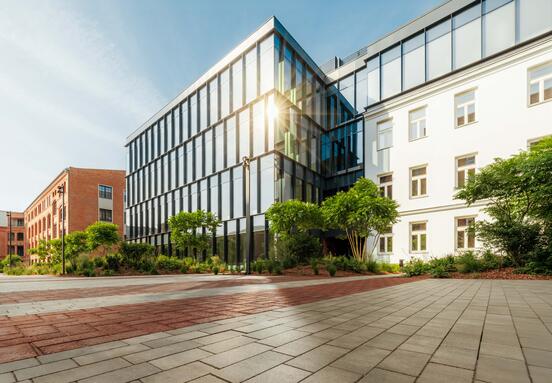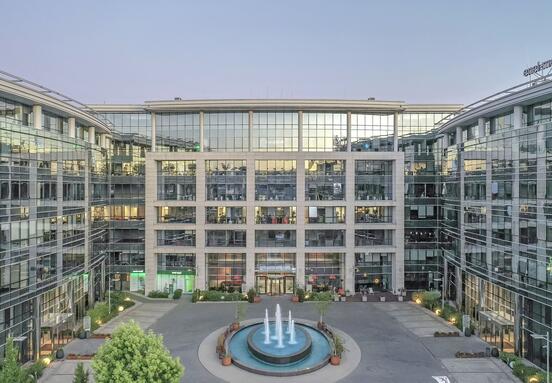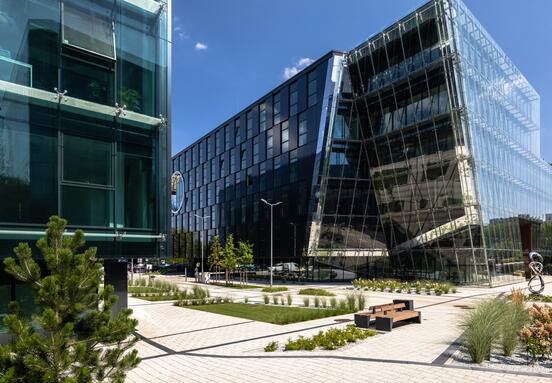Błażej Kucharski, regional director of Colliers International in Tri-City: People are the key. Today, companies fighting to attract talented staff are finding employees outside Warsaw. In the eyes of employers, regional cities have gained in importance in this respect. Large Polish and international companies have begun to locate their offices and business service centers in them. This has propelled the development market, with new office space being built at a rapid rate. Poland is still number one in Europe in the business services sector, and regional cities are where they are based.
Marcin Włodarczyk, regional director of Colliers International in Łódź: The second aspect is investment transactions. Foreign investors have noticed the potential of regions and have started buying buildings outside Warsaw on a larger scale. This has allowed them to become more competitive. Successful sales transactions are encouraging developers to carry out further projects.
Kraków and Wrocław have already broken the barrier of one million square metres of office space. Now, the closest to this number is Tri-City. What is behind its popularity among tenants and developers?
BK: There are already around 800,000 square metres of office space in Tri-City. Over 160,000 square metres are under construction, with a similar amount planned, so we will reach a million metres very quickly. What makes Tri-City stand out is its location by the sea, with fresh air, lots of greenery and beautiful architecture. Life here is very comfortable. People come to Gdansk, Sopot and Gdynia to work and live from the far corners of Poland. Importantly, Tri-City offers a lot of attractive jobs, with unemployment at only about 2%. Salaries in sectors such as IT, which is highly developed here, are equal to those found in Warsaw. Human capital is at a very high level. This has been noticed by both local and international companies, which willingly locate their offices and business centers here. This obviously drives demand for new offices. Developers will have a lot of work to do in Tri-City for a long time.
To see the largest office buildings completed this year in Poland, you have to go to Łódź. But it hasn’t always been so good here. Let’s take a look at what has changed.
MW: Łódź was underestimated for many years. Developers bypassed it for a long time, perceiving it as a high-risk city because of its image associated with the industrial past and the poor condition of its urban fabric. Paradoxically, the proximity of Warsaw did not help either. However, it is the third largest city in Poland, sixth in terms of office space and has a very large labour market. As for Łódź’s potential for the modern business services, which drives the development of the office market in the city, it is larger than the supply of office space would suggest. For example, while the supply of offices in Poznan and Katowice is higher than in Łódź, there are more employees in the BPO and SSC sector in Łódź. And this is an interesting paradox that developers have finally noticed.
2016 was a breakthrough year for Łódź. It was then that record transactions were recorded and several new international names entered the city. It turned out that the Łódź real estate market has huge potential, which many large developers had not noticed before. Now the biggest of them are investing here, including Skanska, Echo Investment, Ghelamco and HB Reavis.
Although both centres are developing rapidly, they are coping with the absorption of such a large amount of office space differently. In the third quarter of 2019, Tri-City saw the lowest vacancy rate among regional cities (4.8%), while Łódź recorded the highest (12.1%). Does this mean that Łódź has overestimated the market’s absorption ability?
MW: Just seven years ago, the office vacancy rate in Łódź was about 20%. The 12% figure comes from the high supply of new offices in recent years in response to demand, but it is still a safe level. Meanwhile, this is beneficial for tenants because they have a lot of projects to choose from. When the rate is too low, market balance is upset.
The increase in vacancy rates over the past year is due to the fact that Łódź is on a roll. A lot of new office space is under construction, currently around 80,000 square metres, some of which is yet to be leased, which shows that investors and developers have regained confidence in this market. Some are implementing speculative projects, i.e. ones that do not always have pre-let agreements. The results for 2019 indicate that it will be an even better year than the previous one and a new record for demand will be posted.
Such a low vacancy rate in Tri-City is pleasing for developers and office building owners. And how are tenants dealing with this? Is there a prospect in the near future hat the supply of new, large projects will increase?
BK: Tri-City is constantly showing strong demand. By the end of the third quarter just over 23,000 square metres were completed there, while demand amounted to almost 75,000 square metres. In fact, from the tenants’ point of view, we have a favourable market situation with vacancies at over 10%. Our clients expect flexibility, and today the challenge for the real estate market is to ensure more space, as well as making it possible to exit easily from long-term contracts. One answer is shared space, which can complement classic offices. Large organisations looking for flexibility will increasingly use coworking offices.
In Tri-City, we are constantly observing high activity among companies that are expanding, choosing additional space and renegotiating current contracts. This represents around 50% of all transactions to date this year. It is fair to say that interest is so high that supply cannot keep up with demand. However, this should soon be balanced as more than 160,000 square metres of office space are under construction, which will definitely improve the situation for tenants.
What kind of tenants are attracted to Tri-City?
BK: Undoubtedly, Tri-City has several unique specialties, such as ship design and advanced engineering for the Oil&Gas sector. The location is highly valued especially by Scandinavian shipyards, which outsource technologically advanced projects to Polish engineers. However, the IT sector has a leading share in office rentals. Tri-City is becoming Poland’s ‘Silicon Valley’, where companies such as Intel, Amazon, Dynatrace and Nordea Bank, which has its IT back office
there, are developing successfully. The region is almost always on the short list of locations for SSC projects. On the list of countries from which investors come from, the leaders are the USA, Germany and Scandinavia.
What is it like in Łódź?
MW: The business services sector is responsible for around 70% of transactions. Of this, around 30% are IT, another 30% are BPO/SSC, and the remaining 10% are R&D companies, design centers and other types of services.
As many as 70% of lease agreements in Łódź in the last year were new contracts. However, this does not automatically mean that they are new companies that were not in Łódź before. An important trend in the development of the city are new investments by companies that have already been operating there. This is a very interesting phenomenon, though sometimes underestimated as it is less newsworthy than the entry of new brands. Examples of companies expanding in Łódź are: Fujitsu, Nordea, BSH and Philips, which plan to develop and employ additional staff. Unfortunately, this is often not talked about, and yet it shows the city’s investment potential.
Colliers International data paints a very positive picture of regional markets in the past year. Will the forecast for next year be equally positive?
MW: There is currently no data indicating that a radical slowdown will take place in office markets in regional cities, although the inflow of new investors to Poland has generally slowed down slightly in recent years compared to 2010-2016. However, activity among tenants is visible and it is they who determine development. Even if there were some turbulence on a macroeconomic scale, previous years have shown that the Polish market is relatively resistant as often a downturn in Western Europe
prompts the transfer of business processes to the CEE region.
At Colliers, we anticipate good economic conditions for Łódź in the coming years. This will be related to demand, which is a key factor for the development of the market there. The current demand for office space is a derivative of the city’s overall economic and social development. Over 80,000 square metres are under construction. The same amount has building permits and implementation can begin at any time.
BK: Next year, over 71,000 square metres of modern office space will be commissioned in Tri-City. The local office market is heavily propelled by the expansion of tenants who are constantly increasing employment. In my opinion, this trend is stable and will result in vacancy rates remaining at a relatively low level below 10%. On the other hand, a visible problem is the extension of the time need for construction and the rising costs of labour and materials, which may be reflected in an increase in rental rates and higher maintenance costs.
Source: Colliers








